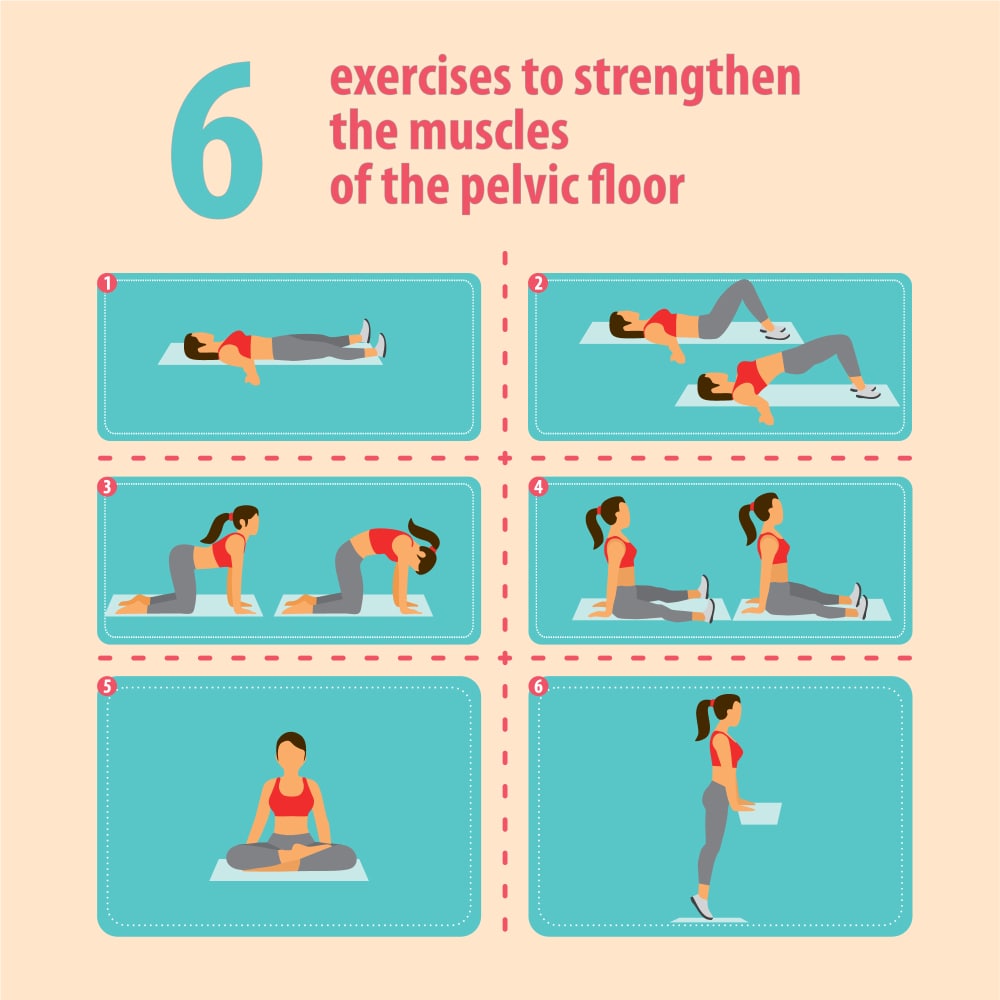Pelvic floor health is a critical aspect of overall well-being, yet it is often overlooked. The pelvic floor, a group of muscles and tissues located at the base of the pelvis, plays a fundamental role in various bodily functions.
Understanding why is pelvic floor health important is essential for promoting overall health and preventing numerous issues that can arise when these muscles are weakened or dysfunctional. Let’s see “Why Is Pelvic Floor Health Important?” in this article.
What is the pelvic floor?

The pelvic floor is a group of muscles and connective tissues that form a sling or hammock-like structure at the bottom of the pelvis. It supports the pelvic organs, including the bladder, uterus (in females), and rectum. These muscles play a crucial role in controlling bowel and bladder functions, supporting the organs in the pelvic cavity, and contributing to sexual function.
The pelvic floor muscles are involved in various activities such as urination, defecation, childbirth, and sexual intercourse. Weakness or dysfunction of the pelvic floor muscles can lead to issues such as urinary or fecal incontinence, pelvic organ prolapse, and sexual dysfunction. Exercises such as Kegel exercises are often recommended to strengthen the pelvic floor muscles and improve their function. This article covers Why Is Pelvic Floor Health Important.
Pelvic floor dysfunction:

Pelvic floor dysfunction refers to a wide range of disorders that occur when the muscles of the pelvic floor are weakened, tense, or impaired in some way.
This dysfunction can manifest in various symptoms and conditions, including:
- Urinary Incontinence: This involves the involuntary leakage of urine, which can occur during activities such as coughing, sneezing, or exercising. Stress urinary incontinence, urge incontinence, and mixed incontinence are common types.
- Pelvic Organ Prolapse: This occurs when one or more pelvic organs, such as the bladder, uterus, or rectum, bulge or descend into the vaginal canal due to weak pelvic floor muscles.
- Pelvic Pain: Pelvic floor dysfunction can cause chronic pelvic pain, which may be experienced as a dull ache, sharp pain, or pressure in the pelvic region.
- Fecal Incontinence: Similar to urinary incontinence, fecal incontinence involves the involuntary leakage of stool. This can range from occasional leakage to complete loss of bowel control.
- Dyspareunia: Painful sexual intercourse can result from pelvic floor dysfunction, often due to muscle spasms or tension in the pelvic floor muscles.
- Pelvic Muscle Spasms: Excessive tension or spasms in the pelvic floor muscles can lead to discomfort, pain, and difficulty with bowel movements, urination, or sexual activity.
Treatment for pelvic floor dysfunction typically involves a multidisciplinary approach, which may include pelvic floor physical therapy, biofeedback, lifestyle modifications, medications, and in some cases, surgery.
A thorough evaluation by a healthcare provider, often a urologist, gynecologist, or pelvic floor physical therapist, is essential to diagnose the specific issues and develop an individualized treatment plan. Why Is Pelvic Floor Health Important will be discussed later in this article.
Exercises to strengthen the pelvic floor:

Several exercises can help strengthen the pelvic floor muscles including:
Kegel Exercises:
- Contracting the Muscles: Once you’ve identified the pelvic floor muscles, tighten them by squeezing as if you’re trying to hold in urine or prevent passing gas.
- Hold: Hold the contraction for 3-5 seconds, making sure to breathe normally during the hold.
- Release: Relax the muscles completely for 3-5 seconds.
- Repeat: Aim for 10-15 repetitions, gradually increasing to 3 sets of 10-15 repetitions per day.
- Progression: As you become more comfortable with Kegel exercises, you can gradually increase the duration of the contractions and the number of repetitions. You can also try holding the contractions for longer periods, up to 10 seconds, or performing quick, rapid contractions (often called “fluttering” or “pulsing” Kegels).
Yoga:
Certain yoga poses, such as bridge pose, cat-cow pose, and pelvic tilts, can help engage and strengthen the pelvic floor muscles.
Pilates:
Pilates exercises often focus on core strength and stability, which can indirectly benefit the pelvic floor muscles.
Biofeedback:
This technique involves using special devices or sensors to provide feedback on pelvic floor muscle contractions, helping you learn to engage and strengthen these muscles more effectively.
It’s important to consult with a healthcare provider, particularly a pelvic floor physical therapist, before starting any pelvic floor exercise program, especially if you have any pelvic floor dysfunction or other medical conditions. They can provide personalized guidance and ensure you’re performing the exercises correctly. Let’s understand Why Is Pelvic Floor Health Important.
Why is pelvic floor health important?

Pelvic floor health is crucial for several reasons:
- Support for Pelvic Organs: The pelvic floor muscles support the pelvic organs, including the bladder, uterus (in females), and rectum. Weakness or dysfunction of these muscles can lead to pelvic organ prolapse, where one or more organs descend into the vaginal canal or rectum, causing discomfort and potentially affecting organ function.
- Urinary and Fecal Continence: Strong pelvic floor muscles help control bladder and bowel function. When these muscles are weakened or dysfunctional, it can lead to urinary incontinence (involuntary leakage of urine), fecal incontinence (involuntary leakage of stool), or difficulties with bowel movements and urination.
- Sexual Function: The pelvic floor muscles play a role in sexual function, including arousal, sensation, and orgasm. Dysfunction of these muscles can lead to sexual dysfunction, such as pain during intercourse or difficulty achieving orgasm.
- Pelvic Pain Management: Pelvic floor dysfunction can contribute to chronic pelvic pain, which can significantly affect quality of life. Strengthening and maintaining the health of the pelvic floor muscles can help alleviate pelvic pain symptoms.
- Pregnancy and Childbirth: During pregnancy and childbirth, the pelvic floor muscles undergo significant strain and stretching. Maintaining good pelvic floor health before, during, and after pregnancy can help prevent issues such as pelvic organ prolapse and urinary incontinence.
- Posture and Core Stability: The pelvic floor muscles are part of the core muscle group, which helps support the spine and maintain good posture. Strengthening the pelvic floor muscles can contribute to overall core stability and prevent lower back pain.
Overall, maintaining optimal pelvic floor health is essential for preserving bladder and bowel control, supporting pelvic organs, enhancing sexual function, managing pelvic pain, and promoting overall physical well-being. Regular pelvic floor exercises, along with a healthy lifestyle and proper medical care, can help achieve and maintain pelvic floor health.
Conclusion:
Pelvic floor health is essential for maintaining various bodily functions, including bladder and bowel control, sexual function, and pelvic pain management. By understanding the importance of pelvic floor health and taking proactive steps to maintain it, individuals can promote overall well-being and prevent numerous health issues.
FAQs:
Do men have a pelvic floor?
Yes, men do have a pelvic floor. Similar to women, the pelvic floor in men consists of muscles and tissues that support the bladder, rectum, and other pelvic organs, playing a crucial role in urinary and bowel function, sexual health, and overall pelvic stability.
Does insurance cover pelvic floor therapy?
Insurance coverage for pelvic floor therapy can vary depending on factors such as the specific insurance plan, the diagnosis, and the type of therapy being provided. In many cases, pelvic floor therapy may be covered by health insurance plans, particularly if it is deemed medically necessary for treating conditions such as urinary incontinence, pelvic pain, or pelvic organ prolapse.
Does queefing mean a weak pelvic floor?
Queefing, the release of trapped air from the vagina, is a normal occurrence and not necessarily indicative of a weak pelvic floor. While pelvic floor weakness can contribute to queefing, factors such as activity level, hormonal changes, and childbirth also play roles. Consulting a healthcare provider can offer insight into pelvic floor health and any related concerns.
Does pelvic floor therapy work?
Yes, pelvic floor therapy can be effective for addressing various pelvic floor dysfunctions, including urinary incontinence, pelvic pain, and pelvic organ prolapse. Through exercises, manual therapy, and education, pelvic floor therapy aims to strengthen and optimize pelvic floor function, leading to improved symptoms and overall quality of life for many individuals. However, the effectiveness of therapy can vary depending on individual circumstances and adherence to the treatment plan.
Do squats strengthen the pelvic floor?
Yes, squats can help strengthen the pelvic floor muscles indirectly by engaging the core muscles, including those of the pelvic floor. Squats involve movement of the hips and pelvis, which can promote improved pelvic floor function and stability. However, it’s essential to perform squats with proper form and technique to avoid straining the pelvic floor muscles. Hope, you have got why is pelvic floor health important.
References:
- https://www.ncbi.nlm.nih.gov/pmc/articles/PMC2617789/
- https://www.betterhealth.vic.gov.au/health/conditionsandtreatments/pelvic-floor
- https://my.clevelandclinic.org/health/body/22729-pelvic-floor-muscles


